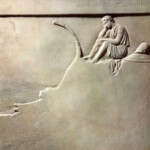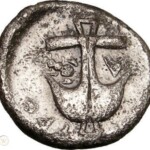The Greek Lexicon of Ships and Navigation is based on an idea of Carmine Ampolo and deals with one of the most characteristic features of Greek civilisation from its very beginnings: the relationship with the sea and the language used to describe it, in all its aspects.
Right from the very first Greek literary production, in particular in the Odyssey, the existence of an extraordinarily rich and precise technical vocabulary emerges in describing ships and equipment, ports and manoeuvres, but also the geography of the coast, the blowing of the winds, the turning of the stars, indispensable references to navigation; a vocabulary that clearly pre-existed and was already in use.
The project aims to offer an ideal tool for understanding this language. A systematic census of literary, epigraphic and papyrological sources has led to the selection of about 1800 headwords, which represent the content of the work.
- terms used to designate persons involved in various capacities in maritime and inland
- waterway navigation, civil/mercantile and military;
- the types of vessels, their structural parts, equipment and gear;
- manoeuvres and warfare at sea, including shipwrecks and piracy-related activities;
- naval law;
- port facilities and terms used in the description of routes and coastlines;
- the vocabulary of the sea and winds and astronomical terminology in their navigational aspects;
- cults and rituals linked to navigation;
- medical terms designating diseases related to life at sea;
- maritime taxation and trade.
The chronological span is from the 7th century BC to the 6th century AD.
The headwords are structured by single entries or by grouping them into homogeneous semantic groups and take account of dialect variants.
The treatment, in the language chosen by the editor, illustrates the use of the term in its aspects immediately related to the subject of the lexicon, without however neglecting, in the case of entries that present a greater complexity of use, a reference to the remaining values – think, for example, of the frequent use of translational or poetic nautical terms -. Given the nature of the project and its aims, we did not want to neglect the possible evidence offered by the archaeological investigation; to this end, the analysis of the entries finds its natural complement in an iconographic section aimed at illustrating, where possible, navigation and related activities in their material aspects.
Structure of entries
- Greek term
- Translation
- Derived or related terms treated in the same entry
- Etymology
- Linguistically related and lexically relevant terms. Terms that receive independent
- treatment will be preceded by a →.
- Lexicographic references
- Toponyms and/or cults, if any
- Description
- Bibliography
- Iconographic apparatus

